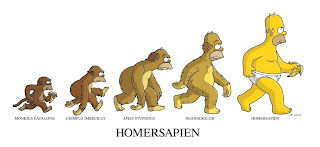Tail docking issue has been stuck in my head for a while. For one reason is that I did a statement revision regarding this issue in the AnSc 499 project. According to my research for the revision, I know that tail docking is not necessary and most surgeries taken place for cosmetic reason. Plus, it is a very painful procedure for dogs, especially puppies, to get through. Therefore, this surgery is not recommended at all. Those are pretty nice statements and rationales. Other than that, however, I know nothing more about what the cause is that drives owners to have their dogs’ tail docked. Until yesterday, when I saw a Weibo (Chinese version of “Twitter”) message appealing for refusal of docking dogs’ tail, it has triggered my curiosity of getting to know more details about tail docking.
Historically, tail docking was thought to prevent rabies, strengthen the back, increase the animal's speed, and prevent injuries when ratting, fighting, and baiting. In early Georgian times in the United Kingdom a tax was levied upon working dogs with tails and so many types of dogs were docked to avoid this tax. The tax was repealed in 1796 but that did not stop the practice from persisting.
Tail docking is done in modern times either for prophylactic, therapeutic, or cosmetic purposes. For dogs that worked in the field, such as some hunting dogs and herding dogs, tails could collect burrs and foxtails, causing pain and infection and, due to the tail's wagging, may be subject to abrasion or other injury while moving through dense brush or thickets. Tails with long fur could collect feces and become a cleanliness problem
--Wikipedia
In addition, what I’ve read from the Weibo message is that puppies would like to cuddle up and sleep while holding their tails for safety purpose. This however decreases their alert. Nevertheless people have invented tail docking surgery so that puppies would increase their alert to the surrounding. This is why tail docking surgery has been carried out frequently among hunting dogs which requires high level of alert during hunting and guarding.
According to above two explanations, it is apparent that the purpose of people having puppies’ tail docked is to and only to reach humans’ selfish benefits (i.e. either to avoid tax or to hunt efficiently). This is not a good excuse at all.
Some side effects for dogs after having tail docked are:
chronic health problem;
chronic pain;
impaired locomotion;
and impaired communication (1).
Above side effects are some arguments used to oppose tail docking in domesticated dogs in a scientific paper. The article also includes arguments that support tail docking such as maintaining tradition, maintaining breed quality, as well as personal preference, which I find most of them are pretty weak arguments, and do not stand for a point. Anyway, arguing which side is correct and which side is wrong is not the issue I want to discuss today. My take home message for today is that to my knowledge, the reason for tail docking is not convincible enough. The surgery is invented for humans’ benefits more than for dogs’ benefits.
To me, it is NOT fashion at all!!
Finally, I’d like to show this video which is a two day old Deutsch Drahthaar having its tail docked. The puppy is not having any anesthesia. You can virtually hear the unpleasant scream of the poor little thing. After watching this, I believe for no matter what reason, a puppy does not deserve this.
(I don't know why I cannot find the video under "insert a video" option, so I guess I will just post the link.)
Reference:
1. Bennett, P. C., E. Perini. 2003. Tail docking in dogs: a review of the issues. Aust. Vet. J. 81:208-218










